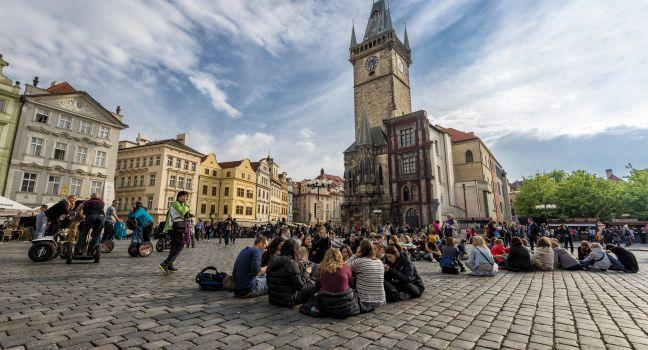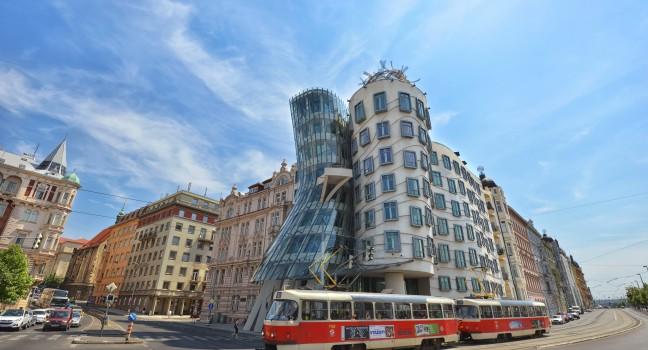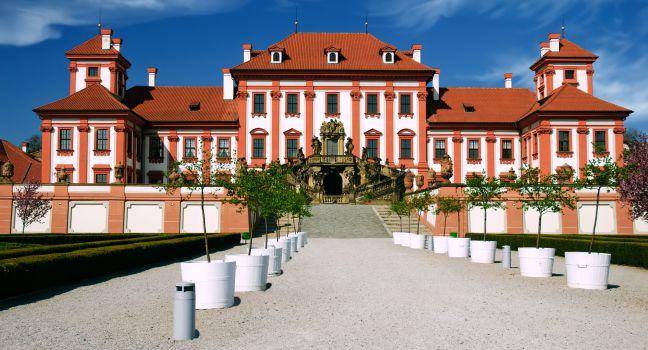Full of fairy-tale vistas, Prague is beautiful in a way that makes even the most jaded traveler stop and snap pictures. The city is physically divided in two by the Vltava River (also sometimes known by its German name, the Moldau), which runs from south to north with a single sharp turn to the east.
Originally, Prague was composed of five independent towns: Hrad?any (the Castle Area), Malá Strana (Lesser Quarter), Staré M?sto (Old Town), Nové M?sto (New Town), and Josefov (Jewish Quarter), and these areas still make up the heart of Prague—what you think of when picturing its famed winding cobblestone streets and squares.
Hrad?any, the seat of Czech royalty for hundreds of years, centers on the Pražský hrad (Prague Castle)—itself the site of the president's office. A cluster of white buildings yoked around the pointed steeples of a chapel, Prague Castle overlooks the city from a hilltop west of the Vltava River. Steps lead down from Hrad?any to the Lesser Quarter, an area dense with ornate mansions built for the 17th- and 18th-century nobility.
The looming Karl?v most (Charles Bridge) connects the Lesser Quarter with the Old Town. Old Town is hemmed in by the curving Vltava and three large commercial avenues: Revolu?ní to the east, Na p?íkop? to the southeast, and Národní t?ída to the south. A few blocks east of the bridge is the district's focal point: Starom?stské nám?stí (Old Town Square), a former medieval marketplace laced with pastel-color baroque houses—easily one of the most beautiful central squares in Europe. To the north of Old Town Square the diminutive Jewish Quarter fans out around a tony avenue called Pa?ížská.
Beyond the former walls of the Old Town, the New Town fills in the south and east. The name "new" is a misnomer—New Town was laid out in the 14th century. (It's new only when compared with the neighboring Old Town.) Today this mostly commercial district includes the city's largest squares, Karlovo nám?stí (Charles Square) and Václavské nám?stí (Wenceslas Square).
Roughly 1 km (½ mile) south of Karlovo nám?stí, along the Vltava, stands what’s left of the ancient castle of Vyšehrad high above the river. On a promontory to the east of Václavské nám?stí stretches Vinohrady, the home of Prague's well-to-do professional set. Bordering Vinohrady are the scruffier neighborhoods of Žižkov to the north and Nusle to the south. On the west bank of the Vltava lie many older residential neighborhoods and several parks. About 3 km (2 miles) from the center in every direction, communist-era housing projects, called paneláks, begin their unsightly sprawl.






